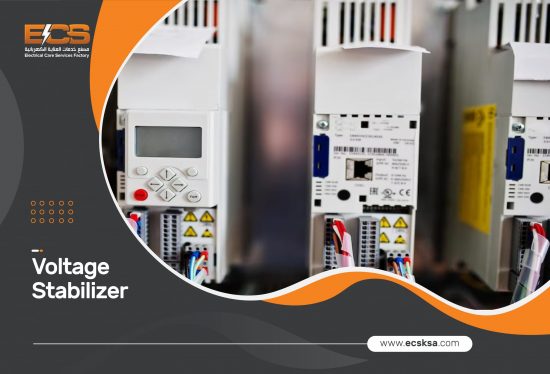The Function of Voltage Stabilizer
The main function of a voltage stabilizer is to regulate the output voltage to a constant level, despite changes in the input voltage. This helps to ensure that the connected equipment, such as a refrigerator, television, or computer, receives a consistent voltage supply and operates within its safe limits. The voltage stabilizer helps to protect the equipment from damage due to voltage fluctuations, surges, spikes, or brownouts and extends its lifespan by providing stable power. Additionally, voltage stabilizers can help improve the performance and efficiency of electrical equipment by providing a steady power supply.
Types of Voltage Stabilizers
There are several types of voltage stabilizers, including:
1. Automatic Voltage Regulator (AVR)
AVR stabilizers use electronic components to continuously monitor and adjust the output voltage to maintain a constant level.
2. Servo Controlled Voltage Stabilizer
This stabilizer uses a servomotor to adjust the output voltage and is commonly used in industrial applications.
3. Transformer-Based Voltage Stabilizer
This stabilizer uses a transformer to step up or down the voltage as required to provide a stable output voltage.
4. Tap-Changing Voltage Stabilizer
This type of stabilizer uses a series of taps on a transformer to adjust the output voltage.
5. Electronic Voltage Stabilizer
This stabilizer uses electronic components, such as capacitors and diodes, to regulate the output voltage.
6. Line Interactive Voltage Stabilizer
This stabilizer is commonly used for personal computers and small appliances. It uses a transformer to provide voltage regulation and a battery backup to provide power during outages.
Advantages or Disadvantages of Voltage Stabilizer
Advantages of Using a Voltage Stabilizer
- Protection of electrical equipment: A voltage stabilizer helps protect electronic equipment from damage due to voltage fluctuations and surges by providing a consistent and stable voltage supply.
- Improved performance and efficiency: By ensuring a constant voltage supply, a voltage stabilizer can help improve the performance and efficiency of electrical equipment.
- Increased lifespan of equipment: By protecting equipment from voltage fluctuations, a voltage stabilizer can extend the lifespan of electrical equipment.
- Better power quality: By regulating the output voltage, a voltage stabilizer can help improve the overall quality of power being supplied to electrical equipment.
Disadvantages of Using a Voltage Stabilizer
- Initial cost: Voltage stabilizers can be expensive to purchase and install, especially for larger systems.
- Maintenance: Voltage stabilizers require regular maintenance and checks to ensure they function properly and protect equipment.
- Complexity: Some types of voltage stabilizers can be complex to install and operate, requiring specialized knowledge and training.
- Energy losses: Some voltage stabilizers can introduce energy losses, reducing overall efficiency.
How To Check If the Voltage Stabilizer is Working
To check if a voltage stabilizer is working, you can follow these steps:
- Verify the input voltage: Use a multimeter to measure the input voltage to the voltage stabilizer. This should be done at the input terminal of the stabilizer. Record this voltage for later comparison.
- Measure the output voltage: Next, measure the voltage at the output terminal of the stabilizer. This is the voltage that is being supplied to the connected equipment.
- Compare the input and output voltages: Compare the input and output voltages. If the output voltage is steady and within the specified range, even as the input voltage changes, the stabilizer is working properly.
- Check for voltage fluctuations: If the output voltage fluctuates, it indicates that the stabilizer is not functioning properly and may need to be repaired or replaced.
- Check the equipment: Finally, check the connected equipment to ensure that it operates within safe limits and is not damaged by voltage fluctuations.
It is important to regularly check the voltage stabilizer to ensure that it works properly and protects the connected equipment. If you are unsure how to check a voltage stabilizer properly, it is recommended to seek the assistance of a qualified electrician or technician.
Conclusion
In conclusion, a voltage stabilizer is an important device for regulating the output voltage and protecting electrical equipment from damage due to voltage fluctuations. Several types of voltage stabilizers are available, each with its own advantages and disadvantages. To ensure that a voltage stabilizer is functioning properly, it is important to regularly check the input and output voltages and compare them to ensure that the stabilizer provides a stable and consistent voltage supply. If you are unsure about how to check a voltage stabilizer, it is recommended to seek the assistance of a qualified electrician or technician.
Protect your electronics today with a reliable voltage stabilizer. Choose ECSKSA for high-quality voltage stabilizer solutions and ensure seamless performance for your equipment.
FAQs
1. What does a voltage stabilizer do?
A voltage stabilizer helps regulate and maintain a steady output voltage, regardless of fluctuations in the input voltage. It helps protect electronic equipment from damage due to voltage spikes or dips.
2. What is the process for checking a voltage stabilizer?
To check a voltage stabilizer, you can verify the input voltage using a multimeter, measure the output voltage, compare the input and output voltages, check for voltage fluctuations, and check the connected equipment.
3. How often should you check a voltage stabilizer?
It is recommended to regularly check the voltage stabilizer to ensure that it is functioning properly and protecting the connected equipment. The frequency of these checks will depend on the usage and environment.
Do you have a question in your mind? If so, make sure to fill out the form below!












